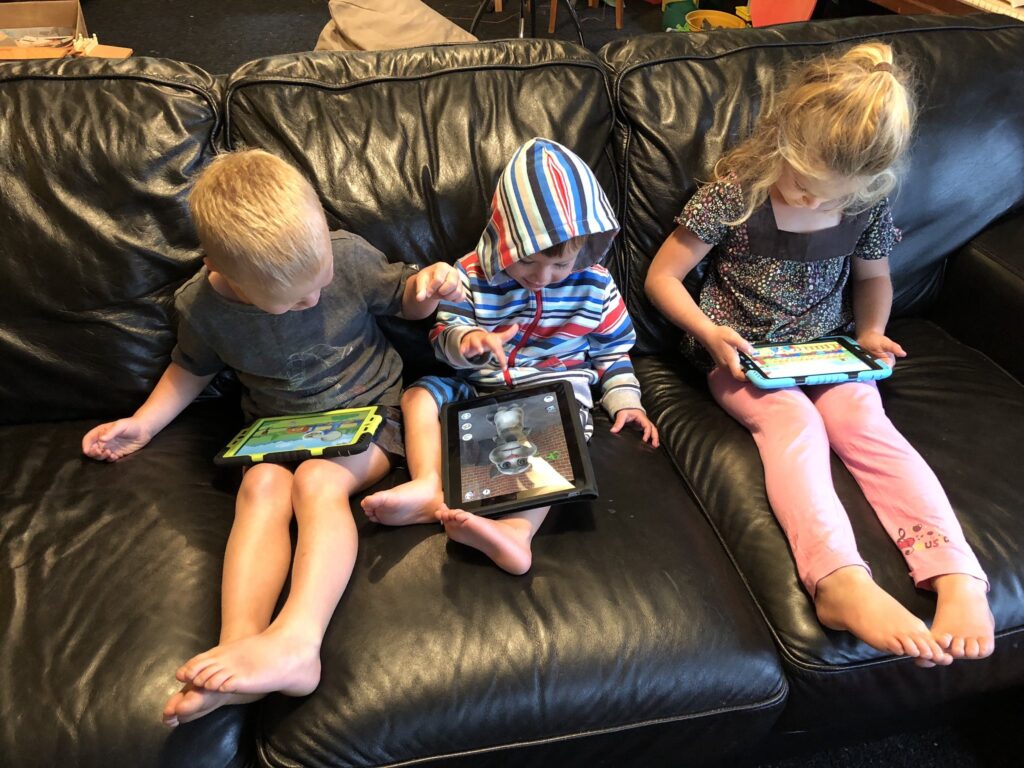A practical guide to fostering dialogue on difficult subjects
The atrocities of October 7th, the kidnapping of Israeli hostages and the ongoing conflict in Gaza have people all over the world angry and afraid. Rhetoric online and in news reports inflames already divisive discussions and leads to a further polarization of opinions. This has already had tragic consequences around the world: A Jewish senior is beaten to death with a megaphone at a pro-Palestinian rally in LA, a six-year-old Muslim boy is killed in Chicago, shots are fired at Montreal elementary schools, Jewish students on college campuses around the world face physical violence, death threats, and harassment, women in hijabs are spat on and sworn at by strangers.
People are scared. And no wonder – we appear to have completely lost the ability to communicate across this divide. Most of us have largely forgotten the tools of civil discourse, the skills needed to foster dialogue between people with opposing views. Without these tools, it’s easy to despair. It feels impossible to address the fault lines of difference when we are mourning the dead and missing when we are afraid for our children. And yet, this is when it’s most important: Continued connection is our only source of hope when we find ourselves dangerously at odds.
Thankfully, there are always groups of people and individuals who seek to find a way. At the end of October, as student groups in universities across the world retreated dangerously further into their echo chambers, the Muslim Law Students Association and Jewish Law Students Association at the University of Ottawa issued an extraordinary joint statement to publicly acknowledge each other and the need to keep spaces safe and open for dialogue, focusing on what unites them – their common humanity. In this statement, they urged all professors and students to understand that while they have freedom of speech, “this is an exceptionally raw and difficult time. Members of our law school community have lost loved ones in this conflict. We call on you to show a commensurate level of sensitivity and tact. As leaders of our respective communities, we call upon our Ottawa Law School family to focus on how our shared pain unites us instead of letting hatred divide us.”
Similarly, a couple of years ago, a Montreal girls’ high school set out to proactively teach students how to have difficult conversations in respectful and productive ways. Katherine Nikidis, Trafalgar School for Girls’ Head of School, invited Rabbi Lisa Grushcow and Dr. Amal Elsana Alh’jooj, peace activists, colleagues, and friends, to unite the entire school community in an online discussion of how to foster dialogue between those with opposing views, even when emotions run high. Rabbi Grushcow is the senior rabbi at the Temple Emanu-El-Beth Shalom in Westmount. Dr. Elsana is the founder of Ajeec-Nisped, The Arab-Jewish Center for Equality, Empowerment and Cooperation – Negev Institute for Strategies of Peace and Development and the founding executive director of the non-profit research centre, PLEDJ (Promoting Leadership for Empowerment Development and Justice). As chair of Trafalgar’s governing board, I had the privilege of moderating this conversation.
During this workshop, Dr. Elsana related a story from her grandmother, which taught her that everyone has the choice to be a lake or a river: A lake sits stagnant, she explained. Without any sources, it’s shut off from the outside. On the other hand, a river always renews itself, allowing new waters to continually wash through it. She pointed out that people tend to shy away from the nuanced, grey areas when dealing with complex events because these require critical thinking. That’s hard to do. It can be uncomfortable when there are competing, often contradictory truths. But that complexity, she said, is what often defines real-life events. She challenged her listeners to spend time in the grey areas, the richest places for critical thinking.
“My truth [as a Palestinian] is my truth but it’s not the only truth,” Dr. Elsana explained. “What are my Jewish colleagues thinking? That is also their truth and has the right to exist. We can disagree on many things but we can find common ground. We can both agree that we want peace and justice based on that solid ground of mutual understanding and respect.”
Rabbi Grushcow followed this by asking, “The thing about dialogue and peace work is to ask how we see each other and hear each other across those differences in a real and respectful way in which nobody is required to give up their own story and experience but in such a way that everyone undertakes the obligation to really listen to each other with an open mind and an open heart?”
To do that, she explains, “it’s got to feel safe enough to stick your head out.”
The Trafalgar school discussion was an excellent example of a school meeting its educational mandate head-on. This requires great bravery in a world where every email, social post, and lecture is weighed in the public eye for bias and discrimination.
As we all face a continuous torrent of divisiveness, I provide workshops to help school communities teach the tools of civil discourse so they can first, maintain a sense of safety and second, encourage productive, creative discussion on hot-button subjects. Here are some of the strategies I encourage people to use:
Start small. Groups of eight people or more have a higher tendency to break off into individual conversations, so start with a small number of participants. This also avoids the tendency to break into factions, indulge in groupthink or let individuals stay silent. Most importantly, it increases the chances for personal connection. Writer Brené Brown famously advised that “people are hard to hate close up. Move in.” People are more motivated to find common ground with others when they can find a reason to like them; small group sizes make this easier. If your goal is to bring this to a larger group of people, this core group of practiced “dialogue champions” can help you add others in increments.
Start by finding and acknowledging areas of agreement. This can be as basic as appealing to a common humanity. These foundations of unity can also be our love for our families, our global desire for peace, and our sense of belonging to a school or other community.
Establish guidelines for respect and safety. This means understanding and avoiding triggers, and having mutually agreed upon ways to backtrack if lines are crossed: Avoid raised voices and drama, ensure people aren’t interrupted, and establish that there are to be no long diatribes or accusations. It’s impossible to solve problems and think rationally when emotions are running high so continuously monitor the temperature. Understand that if anyone no longer feels safe, they can step back or walk away from the conversation.
Validate each other’s positions. Validation isn’t the same as approval or agreement – it’s just an acknowledgement that you have heard and understood. Statements like “I understand you are in pain,” “I can see that you are scared” and “I hear that you’re angry” ensure people feel they are communicating strong emotions in a safe space.
Use “I” statements for emotional reactions. When parties disagree about elements and get upset or angry, expressing that in terms of how it makes them feel is more conducive to continued conversation than accusations. Instead of saying “You’re insulting me,” saying “I feel insulted by that statement” encourages the parties to consider the impact of their words and actions.
Avoid slogans and trigger words. Nothing derails dialogue quite as much as reductive slogans and trigger words. These statements almost always oversimplify complex issues and arrest dialogue. Conversations require us to use natural language that doesn’t immediately send other parties back into the trenches. This isn’t always easy to do but if you’ve established guidelines for respect at the outset, a gentle nudge can help parties reframe the discussion. What can this sound like? Here’s one example: “That term is contentious, would you be able to please explain it in another way?”
Be realistic about outcomes. No one expects you to find a way to world peace but just opening up lines of conversation between opposing viewpoints is a victory. Ensuring people feel safe and heard is also an achievement. Remember that every conversation is a starting point.
No cameras. Unless everyone feels safe and agrees to record at the outset, there should be no recording of the conversation on video. It’s too easy for snippets to be taken out of context, misunderstood or weaponized against participants online. This also helps people relax and focus on the present conversation and not the sound bites.
Proceed with incremental objectives. The initial goal will be to keep lines of respectful communication open. In some cases, this might be enough; in others, the parties might want to proceed incrementally toward some other shared objective. However, for civil discourse to work well, bear in mind that the objective is not to convince the other party they are wrong in their beliefs. Changes in perspective may very well take place as dialogue continues and parties learn more about the other but it cannot be framed as a competition or zero-sum game. When civil discourse remains possible, everyone wins.
If you’ve read this far and are thinking all this is hard to do, you’re 100% right. Like any set of skills, these take patience, practice, and a measure of goodwill. When it goes well, the payoff can be nothing short of spectacular.




